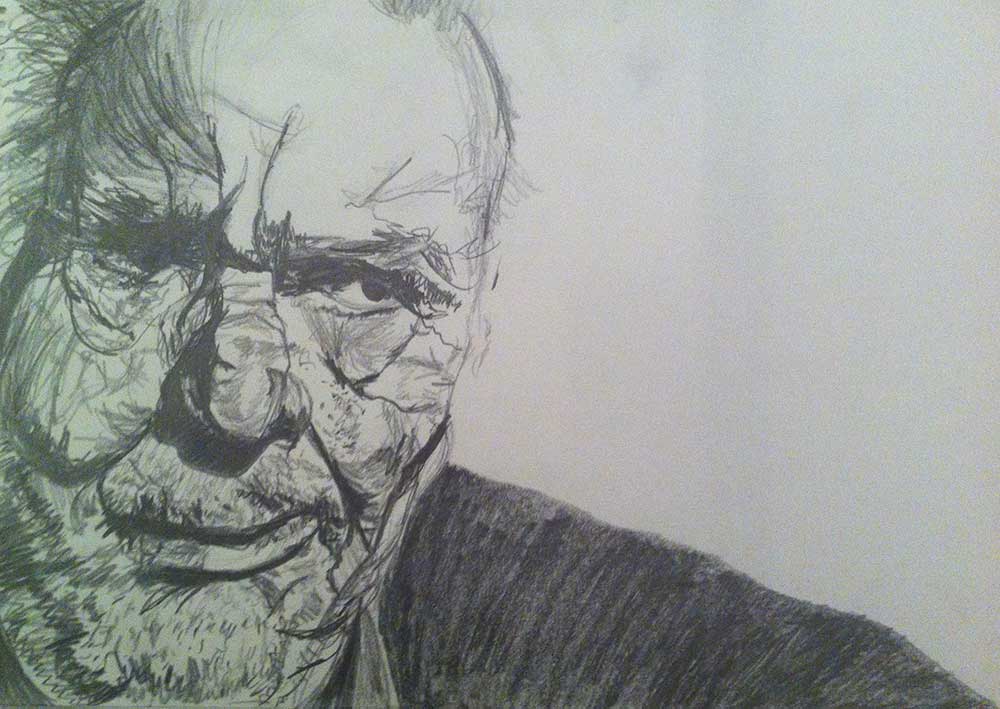
How to draw
This is the first article in our fun and bright article series based on trending google ‘how to…’ searches. We simply type in ‘How to…’ into Google once a month and see what trending topics pop up.
We love to learn something new every day. So, we are running this ‘trending’ article series for a bit of fun, but also to provide useful content that is in tune with current trends.
And did I learn something new! I genuinely couldn’t have been more surprised to learn that ‘how to draw’ comes up on top for google search trends starting with ‘how to’. Ahead of ‘how to lose weight’ or ‘how to make money’ (can’t wait to write about those two…).
In May 19 ‘how to draw’ was also competing with ‘how to slay a dragon’ and ‘how to update WhatsApp’ and if you don’t know how to update WhatsApp you’re probably not our target audience but on the bright side (excuse the pun) drawing is fortunately something I know a little bit about.
Having recently joined the Nucleus art scene in Rochester I’m genuinely delighted to find out that so many people are interested in learning how to draw. And I understand why. Drawing is a great way to express thoughts and ideas and can be incredibly therapeutic.
It also throws me back to when I first met my husband. He was adamant that he couldn’t draw. But here’s the thing:
Anyone can draw.
Seriously, even if you think you can’t, with a little bit of time and patience you too can draw. (My husband is great at drawing now).
Now, I’m not going to bore you with endless tutorials on how to draw a cat, a dog or an eye. The problem with a lot of those tutorials is that they just teach you how to draw one thing in that person’s particular technique of drawing.
And don’t get me wrong. Learning different techniques is not a bad thing. Any art student will tell you that they most likely started out with copying previous masters. I for instance started tracing cartoon figures when I was 7. And you learn a lot that way. But it’s not the secret to learning how to draw.
The true secret to drawing is… – drumroll please:
Change the way you look at things.
The problem is we tend to oversimplify shapes when we look at them. If I asked you what shape a head or eyes are? What would you say? Probably that they are are round, whereas arms and bodies are probably rectangular. And so on. But the reality is they’re not. Heads are often quite rectangular and limbs are often elongated triangles. So, the trick is: instead of looking at objects as shapes start thinking and observing them as lines.
Look at an object and completely forget what you initially thought it should look like. Take anything, a glass, a book, a chair. And look at it closely – follow it’s outer lines. Get a sheet of paper and a pencil and try to draw the lines you see, not the shapes you thought they were originally.
Now, it will take a bit of practise to get your hand-eye-coordination working well, but you will be surprised how quickly you get the hang of it.
Now that you have the most prominent outlines on paper, it’s time to shade – again, rather than thinking in shapes think in dark and light.
Where is the light coming from? Again, go by what you see in real life rather than assumptions. Find a shading technique that you like most (again there are 1000s of tutorials on different shading) but give it a try, go wild with your pencil, or cross hatch or dot or whatever texture you feel like, but try to be consistent at the beginning with the shading technique you choose.
Once you feel you’ve got a grasp of lines and shades it’s time to play with perspectives. It’s what helps you put different objects in relation to each other. The easiest one to start with is the one point perspective. The horizontal line on the page with the dot that is the farthest point. But if you’re more interested in architectural or technical drawings getting your head around two-point and three-point perspectives is essential. It’s what makes it possible to draw 3D rooms and is a fun technique to get your head around.
In the end, drawing is all about having fun and trusting your instincts. Try different mediums (give charcoal, ink, pencil or graphite a go, you never know which one works best for you). This will all help you to find our distinct drawing style. Once you’ve mastered one try another. Start with simple objects first and then move to more complex subjects such as faces or animals. The more difficult it gets the more interesting it gets and the more fun you will have.
If you’re into design then you will appreciate this timeless video interview with Stefan Sagmeister, a renowned New York creative and world-renowned designer. He talks about how we live in a time where we get bored looking at screens and don’t use our hands enough. No matter what the latest technology is, in the end we care more about connecting with human beings. Inspirational enough to get me off my chair.
My favourite quote.
“Ultimately, we want to do work that clearly is made by human beings for human beings”
I don’t think he could have put it more simply or eloquently. Time to give your screen a break and use some real life tools.
Have you tried it? We would love to see it! Show us your drawings on #icandraw on instagram.